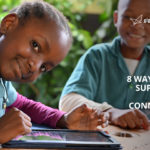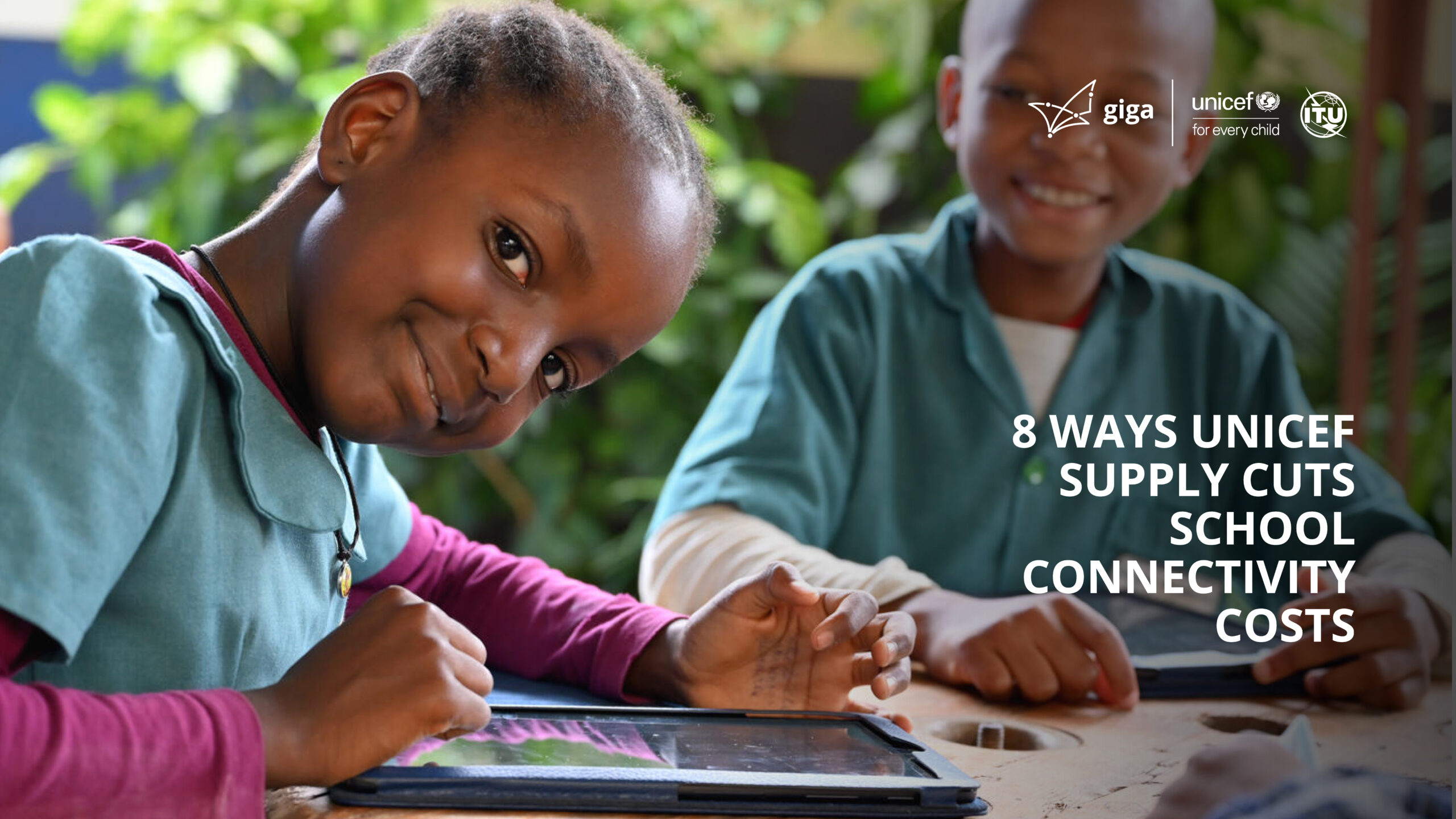As African governments connect their schools to the internet, UNICEF is offering its procurement support and expertise. Based on five years of careful planning, preparation, and pilot projects, UNICEF estimates that its procurement support to African governments can drop the prices of school connectivity by 30 to 60 percent. UNICEF expects to use the following eight key tactics:
- Pooled procurement – By aggregating demand across thousands—or even tens of thousands—of schools, often across countries, UNICEF can create economies of scale that lower the cost per school and attract more competitive bids. UNICEF is also exploring cross-sector pooled procurement with public institutions like health clinics, helping to reduce transaction costs and improve suppliers’ return on investment—especially in harder-to-reach areas.
- Technology agnostic approach – Drawing on its global experience helping governments connect thousands of schools, UNICEF has created standardized service level requirements for school connectivity. These standards make it easier for companies—regardless of the technology they use—to participate in bids. This opens the door for more competition, encourages innovation, and ultimately helps lower prices and improve the quality of connectivity solutions for schools.
- Using the UNICEF brand for credibility – Internet suppliers trust UNICEF’s expertise and reputation. This credibility encourages more companies to participate in procurement processes, increasing competition. With more bidders in the market, governments benefit from lower prices, better service offerings, and enhanced confidence in the long-term viability of school connectivity projects.
- Financial sustainability – UNICEF is exploring ways to make school connectivity more financially sustainable, particularly in remote areas. One potential approach is to extend internet access beyond the school to the wider community. When local households and businesses begin using the service and experience the economic opportunities connectivity brings, they can become paying customers. As more users come online, the cost of keeping schools connected decreases—making the model more viable for service providers over time.
- Attracting financing and investment – UNICEF helps mobilize funding for school connectivity, reducing the financial burden on governments through partners like the World Bank and Islamic Development Bank. It is also supporting new financing models—especially for ongoing costs like satellite services—and helping smaller providers access development aid and Universal Service Funds. These efforts improve competition and make it more viable to serve hard-to-reach schools.
- School mapping – UNICEF has been mapping school connectivity and infrastructure gaps. This mapping improves transparency, reduces information asymmetry, and lowers the investment risk for private suppliers. By highlighting these opportunities and de-risking engagement, school mapping draws new providers into underserved markets, increasing competition, and reducing price.
- Real-time monitoring – UNICEF’s real-time dashboards track school connectivity in real-time, showing not just the connectivity status but also the speeds. By creating transparency and accountability, UNICEF has been able to negotiate even lower costs with providers. UNICEF is exploring a procurement-focused dashboard that benchmarks school connectivity prices across countries. This would help governments assess value for money, compare service contracts, and make smarter, data-driven procurement decisions—especially in resource-constrained settings.
- Innovation – UNICEF uses its procurement expertise to drive new ways of lowering the cost of school connectivity. UNICEF is piloting connectivity credits—an innovative platform that automatically rewards local ISPs for connecting schools, based on real-time connectivity data. In exchange for connecting schools that fall outside of the traditional business case for large suppliers, local providers earn credits redeemable for money or infrastructure access. This approach reduces barriers for smaller suppliers, incentivizes rural expansion, and helps lower the cost of school connectivity over time.
About Giga
Giga is a UNICEF-ITU global initiative to connect every school to the internet and every young person to information, opportunity, and choice. To learn more, visit: https://giga.global/.
Media Contacts
Nobuntu Ndlovu, nondlovu@unicef.org, +41 79 532 4927
Natalia Reiter, natalia@eyetalkcomms.com, +41 79 305 4274
Edward Harris, edward@eyetalkcomms.com, +41 79 224 8782

